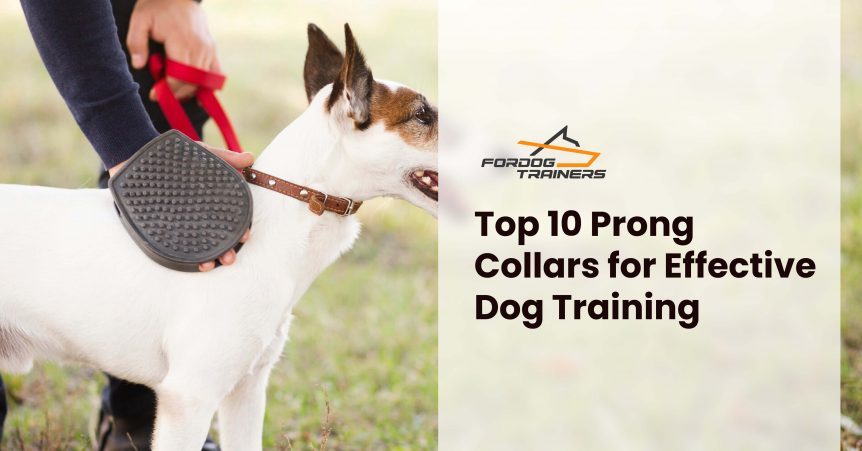Prong collars can be helpful tools for teaching dogs good behavior when used correctly. Let’s look at some of the best prong collars available and how to use them safely.
Contents
Key Things to Know About Prong Collars
Key Points About Prong Collars
- Work well when used correctly for dog training
- Proper fit and technique are very important
- Herm Sprenger makes high-quality prong collars
- Use as short-term training tools, not forever
- Get help from a professional trainer for best results
- Can be effective for leash training and basic obedience
- Not suitable for all dogs or situations
- Should be used in conjunction with positive reinforcement techniques
- Regular maintenance and inspection of the collar is necessary
- Gradual introduction and proper acclimation are crucial for success
1. Herm Sprenger Chrome-Plated Prong Collar
This chrome-plated collar is a favorite among dog trainers. It’s shiny, doesn’t rust, and is super strong. The smooth surface is comfy for dogs, and it’s built to last. The chrome plating protects against wear and tear.
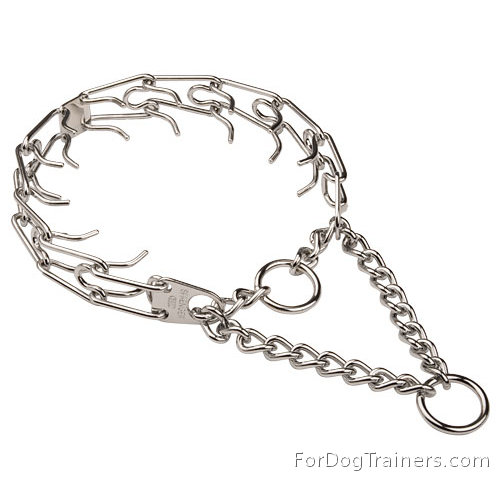
Check out more prong collars for effective training on our website.
2. Training Prong Collar with Swivel and Quick Release
This collar has some cool features. The swivel makes it easy to attach a leash, and you can take it off fast with the quick-release snap. It has 10 links you can remove to get the right fit. The swivel stops the leash from tangling, and the quick-release is handy in emergencies.
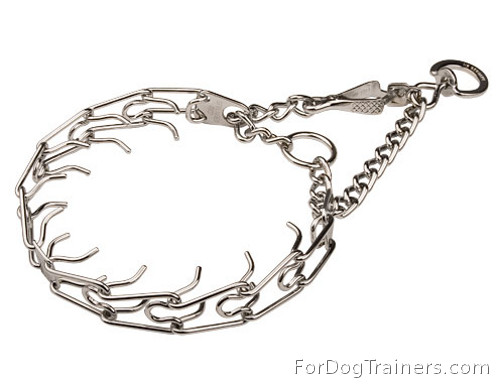
3. Top-Class Dog Pinch Collar
Made from chrome-plated steel, this collar is tough and won’t rust. It’s a great choice for training your dog not to pull on the leash. The chrome plating makes it look nice and last longer.
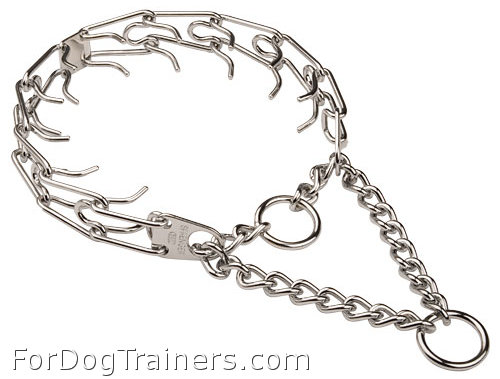
4. Herm Sprenger Dog Pinch Collar (Made in Germany)
Herm Sprenger is known for making top-notch dog gear. This collar is made in Germany and is chrome-plated to last a long time. The German craftsmanship makes it reliable for trainers and dog owners.
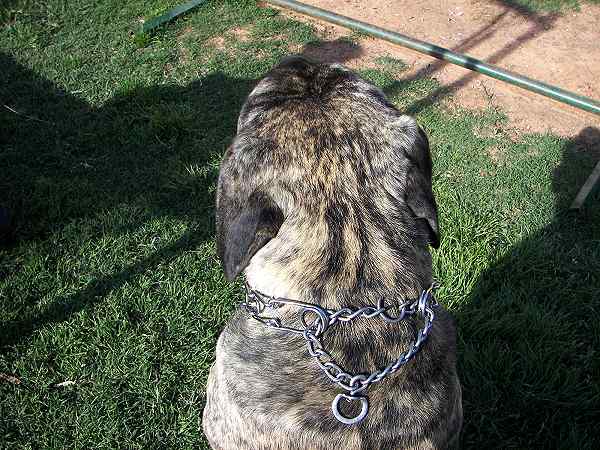
5. Chrome-Plated Pinch Dog Collar by Herm Sprenger
This collar is great for teaching your dog to walk nicely on a leash. It’s made of strong, shiny metal that won’t rust. It has two rings where you can clip the leash, giving you options for how to attach it.
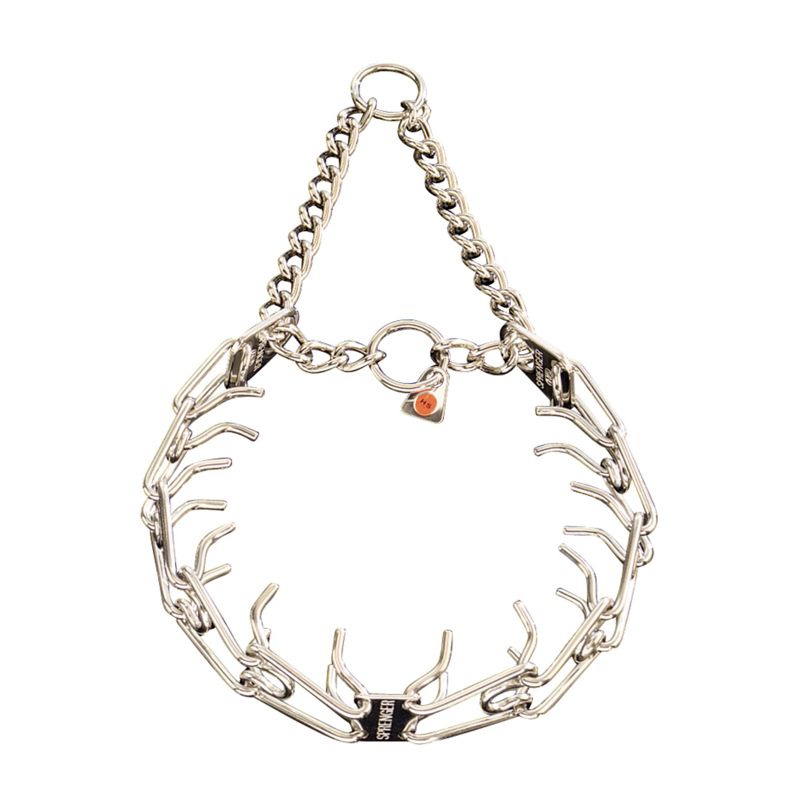
6. Stainless Steel Dog Pinch Collar
This stainless steel collar is super tough and won’t rust. It’s good for helping dogs learn to behave better on walks. Stainless steel is great for dog collars because it’s hypoallergenic, easy to clean, and stays looking good.
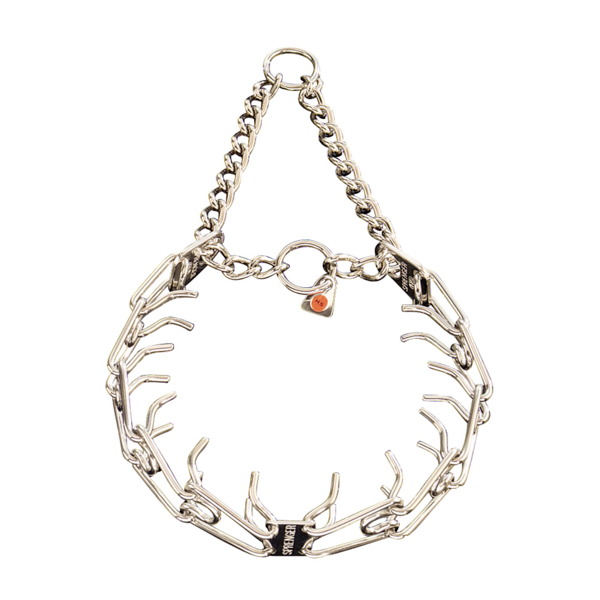
7. Extra Links for Herm Sprenger Chrome Plated Prong Collar
These extra links let you make the collar bigger if you need to. They’re made of strong metal with chrome on top so they won’t rust. This is handy if your dog is growing or if you need to adjust the collar for different training.
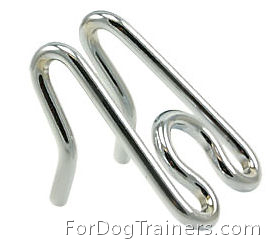
8. Herm Sprenger Pinch Collar for Obedience Training
This collar is great for teaching dogs not to pull on the leash. It’s shiny and won’t rust, which means it’ll last a long time. It’s made especially for obedience training, so it’s good for trainers and serious dog owners.
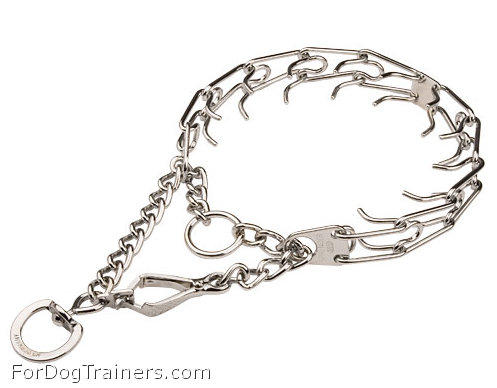
9. Herm Sprenger Stainless Steel Prong Collar
This stainless steel collar is tough and won’t rust. The prongs are spaced out evenly, and there are two rings to attach the leash. The even spacing helps spread out pressure, which is important for training that’s effective and not harsh.
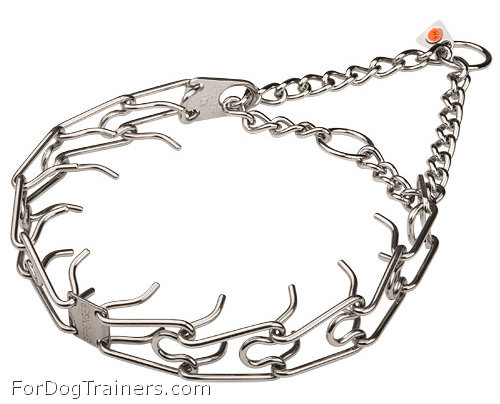
10. Prong Collar Cover – Removable Nylon Protector
This cover goes over the prong collar to make it more comfy for your dog. It also helps the collar last longer. It’s good for dogs with sensitive skin or those just getting used to a prong collar.
Find out more about our prong collar accessories on our website.
How to Use a Prong Collar the Right Way
Using a prong collar isn’t as simple as just putting it on your dog. Here are some tips:
- Make sure it fits right – not too tight or loose
- Put it high on the dog’s neck, right behind the ears
- Only use it for training, not all the time
- Get help from a dog trainer to learn how to use it properly
- Start with short training sessions to acclimate your dog
- Always combine prong collar use with positive reinforcement techniques
- Regularly check the collar for any signs of wear or damage
- Never leave the prong collar on when not actively training
Learn more about proper prong collar use on our website.
Why Trainers Like Prong Collars
Prong collars can be helpful for training because:
- They spread pressure evenly around the dog’s neck
- They can help stop dogs from pulling on the leash
- They’re good for teaching basic commands
- They provide clear and immediate feedback to the dog
- They can be effective for strong or stubborn dogs
- They allow for more precise control during training
But remember, they’re just for training. The goal is to teach your dog to behave well without needing the collar. Proper use and gradual phasing out of the prong collar are crucial parts of the training process.
Effectiveness of Dog Training Tools
Answering Worries About Prong Collars
Some people worry that prong collars are mean to dogs. But when used right, they don’t hurt. They’re not for punishing dogs, but for teaching them. It’s super important to learn how to use them the right way. The prongs are designed to mimic the corrective nip that a mother dog would give to her puppies, not to cause pain or injury.
There are other ways to train dogs too, like using treats or clickers. Every dog is different, so what works best can vary. It’s important to consider your dog’s temperament, size, and specific training needs when choosing a training method. Some dogs respond better to positive reinforcement techniques, while others may benefit from the clear communication that a properly used prong collar can provide.
Wrapping Up
Prong collars can be useful tools for training dogs when used correctly. They’re not for every dog or every situation. If you decide to try one, make sure to:
- Choose a high-quality collar that fits well
- Learn how to use it properly
- Only use it for training, not all the time
- Consider getting help from a professional dog trainer
- Combine prong collar use with positive reinforcement techniques
- Monitor your dog’s response and adjust your approach if needed
- Gradually phase out the prong collar as your dog’s behavior improves
- Continue to reinforce good behavior even after the collar is no longer needed
Remember, the goal is to have a well-behaved dog who doesn’t need special equipment to behave well. Proper training with a prong collar should be a temporary phase in your dog’s overall training journey.
Common Questions About Prong Collars
| Question | Answer | Status | Explanation |
|---|---|---|---|
| Are prong collars cruel? | When used correctly, prong collars are not cruel. They are training tools, not punishment devices. | Caution | Proper usage and training required |
| Do prong collars hurt dogs? | When fitted and used properly, prong collars should not cause pain to dogs. | Caution | Correct fit and usage essential |
| Are prong collars suitable for all dogs? | No, prong collars are not suitable for every dog or situation. | Warning | Individual assessment needed |
| Should prong collars be worn all the time? | No, prong collars should only be used during training sessions. | Warning | Limited use recommended |
| Can I use a prong collar without professional guidance? | It’s recommended to seek help from a professional dog trainer when using prong collars. | Caution | Professional guidance advised |
| Are there alternatives to prong collars? | Yes, alternatives include positive reinforcement methods like treat-based training and clicker training. | Success | Multiple training options available |
| How do I choose the right prong collar? | Choose a high-quality collar that fits your dog well. | Success | Proper selection important |
| Is professional training required for using prong collars? | While not strictly required, professional guidance is highly recommended. | Caution | Professional input beneficial |
| What’s the main purpose of a prong collar? | Prong collars are training tools to teach dogs, not for punishment. | Success | Training purpose emphasized |
| Can prong collars replace other training methods? | Prong collars should be part of a comprehensive training approach, not the sole method. | Caution | Comprehensive training recommended |
For more info on dog training tools and techniques, check out our complete guide to prong collars.

